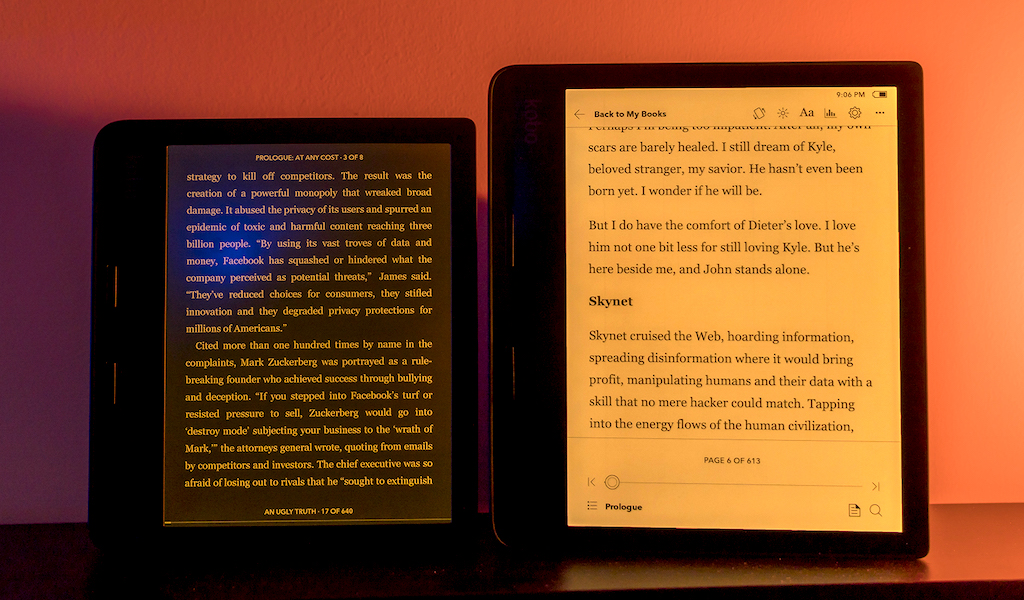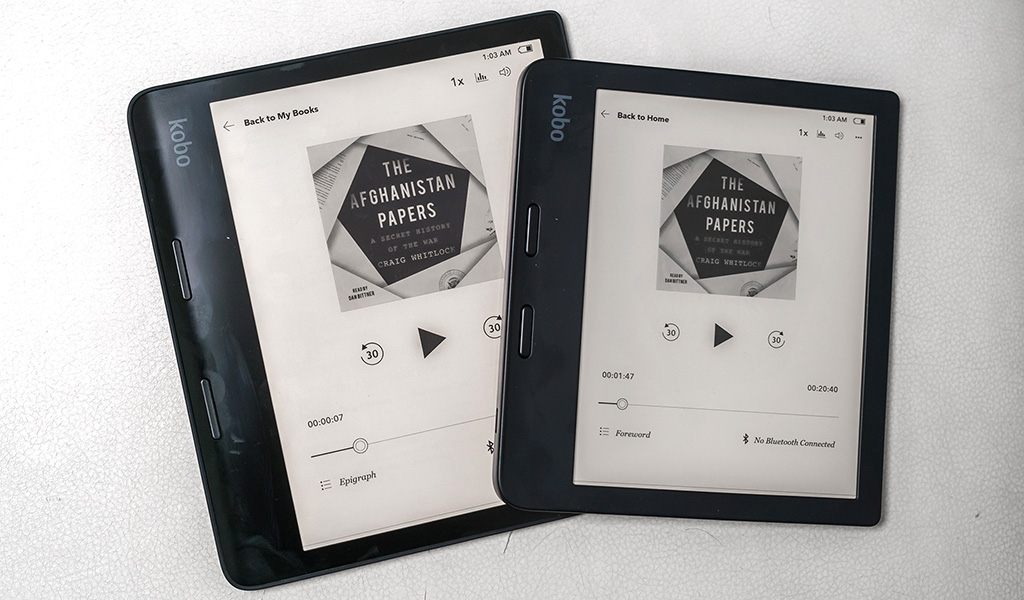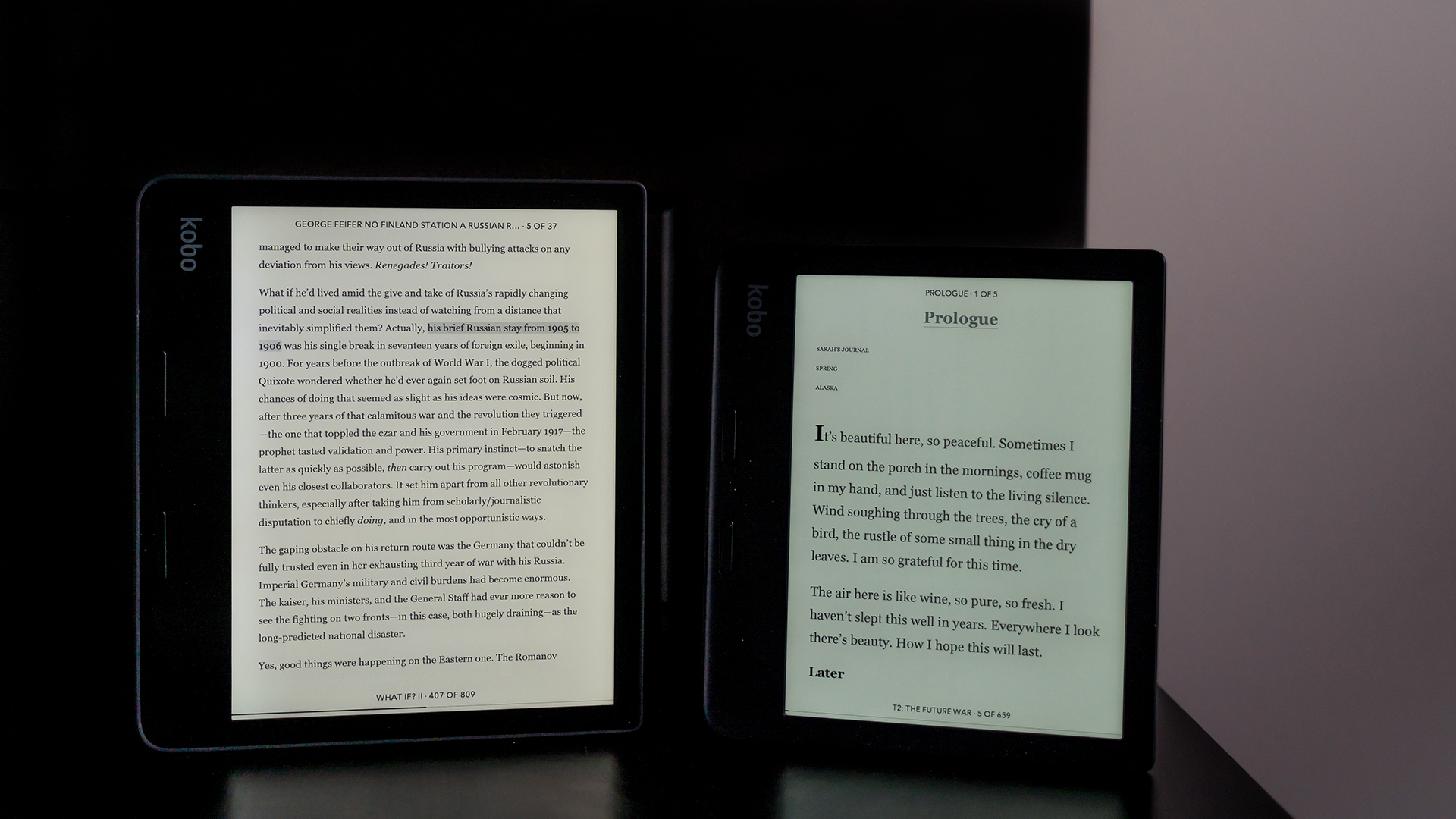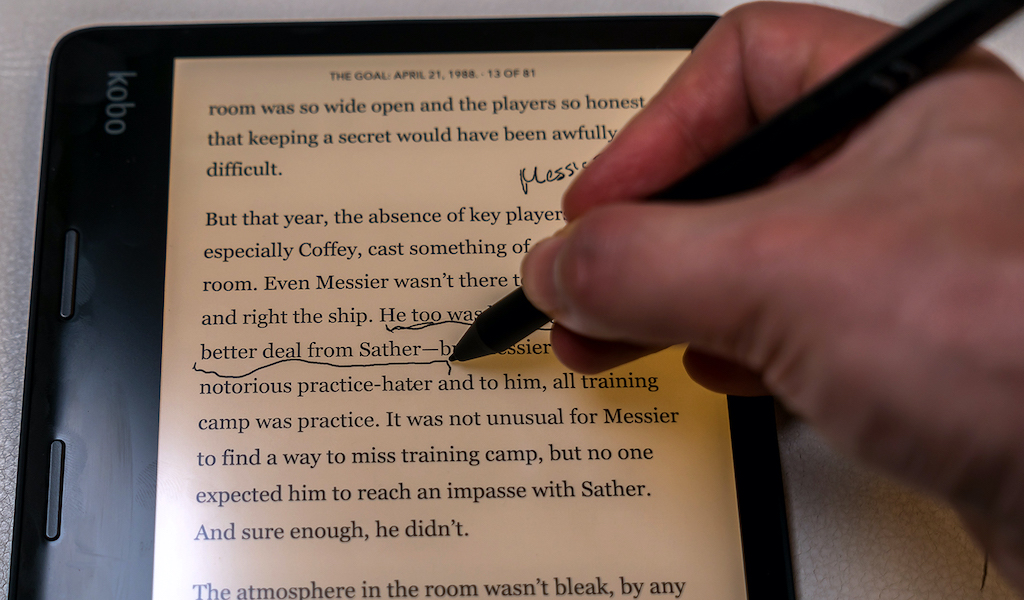
With two new eReaders in the Sage and Libra 2, Kobo is not only tackling familiar designs, but also changing how you read ebooks on them.
It’s been a while since Kobo launched multiple devices at once. The Sage is a new but is arguably continuing from the Forma, whereas the Libra 2 is a direct successor to the previous Libra H2O. It may feel confusing if you’ve never used a Kobo eReader before, though the contrast is apparent between these two.
What the Kobo Sage is all about
The Sage is in that sweet spot between the larger Elipsa and smaller Libra 2. Its 8-inch E Ink Carta 1200 display offers a 300dpi and faster response time when you touch it. That means you will turn pages faster, as well as access other features with greater speed this time. ComfortLight Pro technology also returns, letting you choose between a blue or yellow tint to make it easier to read in any conditions. Not to mention the new Dark Mode for even less eye strain in darker confines. And importantly, the screen is flush with the device’s entire panel, which gives it a seamless look.
The 8-inch screen has the equivalent of a 3:2 aspect ratio, giving the Sage a more squarish design. That makes it fairly wide—too much to slip into a jacket pocket—which forces you to carry it more than you otherwise might. Part of the reason for the form factor is the lip on the side, a design treatment Kobo adopted with the Forma. It simplifies one-handed operation, particularly with the two page-turn buttons situated there.
Where the Sage stands out further is that it incorporates elements from other Kobo models. You get Kobo stylus support (from the Elipsa), landscape reading (Forma) and waterproofing (Libra H2O). In a first for Kobo, it also supports audiobooks from the Kobo store, letting you listen to books, not just read them.
While it may annoy you that Kobo didn’t throw in the stylus with the Sage, they’re best sold separately. You don’t necessarily need to write on the screen, and if you do, you have to accept some caveats. What you may need is a SleepCover case to protect it. It may be fairly durable, but at its price, the Sage isn’t something you want to take for granted.
Looking into the Kobo Libra 2
The Libra 2 is in a similar position in that it borrows from other devices. The Libra H2O had the outer lip with page-turn buttons, and that’s back here. So is the same waterproofing and general size, including the perforated and rubberized back. For reference, IPX8 waterproofing lets you submerge it to depths of two metres of clear water for up to 60 minutes. No saltwater, though, just the tub or pool.
The differences mirror that of the Sage. For instance, the Libra 2 uses the same E Ink Carta 1200 display and its improved response time (plus Dark Mode), albeit at a smaller 7-inch screen size. The screen just isn’t flush with the body, so there is a raised bezel framing the screen. You can also listen to audiobooks and access all the same services you otherwise could with a Kobo eReader.
That includes access to OverDrive to digitally borrow ebooks from your local library, and Pocket to save articles from your phone, tablet or computer to read later on the Libra 2. From a design and functionality standpoint, the Libra 2 has more in common with the Sage than it does the Libra H2O. and as I came to realize while using both devices. Aside from the screen size a few other discrepancies, they’re kind of the same product. That makes the Libra H2O more than viable as an alternative if you don’t need the extras.
The Libra 2 has 32GB of storage, which is plenty for ebooks, but the extra space serves you well for audiobooks, which take up way more room. The Sage offers the same storage amount, too. There are no built-in speakers with the Libra 2, so if you do plan to listen to audiobooks, it will have to be with Bluetooth headphones or a speaker. That goes for the Sage as well.

Content availability
If you’re familiar with Kobo’s products, then you likely already know the drill. Kobo’s Store has about six million titles available. You can find audiobooks separate from ebooks, where you have the option to either buy one outright or subscribe to Kobo Audiobooks for a $12.99 monthly fee. Each month gives you credit to choose one audiobook, whereas others incur a cost.
Kobo Plus Read is another subscription service that’s an “all-you-can-read” buffet of ebooks for $9.99 per month. Bear in mind it’s a fraction of the full library, where you have access to hundreds of thousands of titles, not millions. OverDrive gives you a chance to find an ebook for no charge if your local library has it, so you do have options.
As usual, Kobo’s support for various file formats persists. Any ebook or document in PDF, EPUB, EPUB3, PDF, MOBI, TXT, HTML or RTF will work on the Sage and Libra 2. It also displays images in JPEG, TIFF, GIF, PNG and BMP formats. Same with comic books that come in CBZ and CBR. You do have to load these files through a Windows PC or Mac, but it’s not hard to do.

Reading on the Sage and Libra 2
To be honest, there’s no real mystery here. The Sage will feel unique because of its wider design, whereas the Libra 2 will feel a lot like its predecessor. Kobo fully embraced physical buttons to turn pages, though you can still touch the screen to do that, too. The features, menus and layout are intact, leaving little to learn if you’re familiar with the platform.
I liked that both devices offer ComfortLight Pro and Dark Mode to spread out visual reading preferences. While I didn’t really read in landscape, it does come in handy in certain situations where it’s easier to prop up either eReader against something. Seasoned Kobo users will probably notice the faster page turns compared to prior models, as I did.
Audiobooks also work well, as it’s easy to pair either device with headphones or a speaker. I even had success doing it with the Bluetooth in my car. Kobo’s selection won’t match what you can find on other established platforms, but the library looks like it’s growing already.
When you go to the More section from the home page, Beta Features will include a web browser. It’s still experimental, but it does let you browse the web to read articles. It’s just that the lack of colour really only makes it ideal for text.
 The stylus on the Sage
The stylus on the Sage
The stylus that works with the Sage is the exact same as the one that comes with the Elipsa. I used that one to test out the notetaking features, and am very much on the fence. The smaller screen makes it harder to jot down notes, and when you do, you face limits on what to take with you. I noted these in my Elipsa review, but the gist is that you can’t take the notes you wrote with you when switching devices. For instance, if you jotted down a whole whack of notes on a title with the Elipsa, you won’t see them appear after syncing the same title to the Sage.
Your annotations are fine; basically anything you’ve done through Kobo’s existing feature set. If you jot down notes on PDFs or documents you load into the Sage yourself, you can export those to JPEG, PDF and PNG formats. The My Notebooks section returns, letting you create basic or advanced notes from scratch, the latter of which can turn your writing into text.
It’s neat the Sage can do these things, but I felt it more practical on the Elipsa. The Sage is a bit small to write detailed notes for any piece of text, and I found myself using it more as a highlighter than anything else. If you know someone with a Kobo stylus, try it out first before going for one.
Final thoughts on the Kobo Sage and Libra 2
These two devices are more incremental upgrades than big leaps forward. If you have the Libra H2O, you don’t need to get the Libra 2 unless you want to listen to audiobooks. Same with the Sage, where the Forma remains a worthy alternative when you’re willing to sacrifice audiobooks, stylus support and the better screen.
The other aspects don’t really change. You still access the same services, and reading ebooks isn’t all that different. Battery life is great for both, though audiobooks will drain them faster than simple reading does. Either way, Kobo did a good job building two solid devices, even if your interest in them may be somewhat niche.
The Kobo Sage is available now in black, and the Kobo Libra 2 is available in black and white. There are also SleepCover cases available in four different colours.




My favourite feature is that it supports audiobooks from the Kobo store, so I can listen to books, and not just read them. My eyes get tired easily so this is a great feature for me.
Why don’t you use a phone to listen to audio books which is much more sleek and you can use a normal wired headphone. I believe audiobooks are useless in a e-reader as they use so much of their battery power and they are huge compared to mobile phones.
Comments are closed.